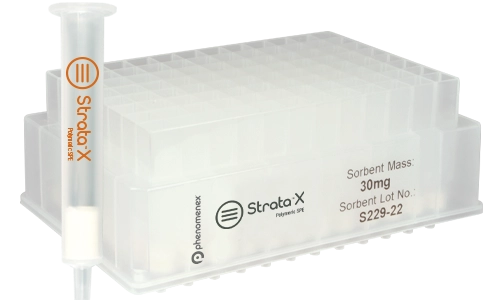Sample Preparation Tip
Level: Intermediate
Why are my recoveries greater than 100%?
When performing analyte extraction with SPE we expect 100% recovery. If recovery is lower, this would suggest there is an issue with retrieval of the analyte from the sorbent. But what are some of the reasons you may see a recovery greater than what you were expecting (or over 100%)?
Common problems
- Co-eluting interferences
- Contaminants from the solvent or sorbents selected
- Internal standard is compromised making your reference point inaccurate
- Recovery calculations are inaccurate
Co-eluting interferences
These are typically present in the matrix and the goal of the SPE step is to remove them. If you are experiencing recoveries greater than 100%, the first step would be to check the eluent using an orthogonal analytical technique to identify that the increased recovery is a result of a co-elution. Where a co-elution is identified, there are a few possible solutions.
- Modify the wash steps of the SPE method to selectively remove the impurity during washing
- Select an alternative SPE sorbent which will better remove these impurities. This is easier if the analyte / impurity can be selectively ionized, as an ion-exchange sorbent will very often afford cleaner extracts than either reversed or normal phase solutions
- Adjust your analytical method to resolve the 2 peaks analytically, negating the necessity to remove this impurity during the SPE step.
- Run a blank plasma sample; this will allow you to ascertain the impurities present and use this blank in the calculations to subtract from your recovery
Contaminants from the solvent or sorbent
These will typically be impurities present in the starting materials which are similar in nature to your compound of interest, and as a result co-elute with it during SPE and subsequent analytical analysis. You can follow the steps above to remove co-eluting impurities, or alternatively as this is not an impurity present in your matrix, you can identify the level present in the sorbent using blank runs and subtract this from your main peak during the calculation. Prior to addition of your sample if you equilibrate your sorbent with the elution solvent this should flush out potential contaminants from the sorbent. For impurities introduced from the solvent, typically switching the solvent should resolve this.
Internal standard is compromised
If your internal standard is not showing 100% recovery, your subsequent calculations will be inaccurate. It is always good practice to use an internal standard similar in nature to your compound of interest as this will give the more consistent reference point for your method. If there is concern your internal standard is not showing good recovery from the SPE material using your method, you can use an external standard which is added to the elution solvent to calculate absolute recovery.
Recovery calculations are inaccurate
It is important to follow this step wise to ascertain where the errors are appearing.
- Calculation Errors - Check all calculations and account for all dilution factors
- Integration Errors - Reintegrate all peaks and use manual calculations to confirm
- Analytical method errors – Ensure the analytical method used allows correct integration and calculation. Ensure no strong solvents are used for injection and run a calibration across a number of dilutions to ensure linearity. Troubleshoot your analytical method to determine any factors which may lead to poor reproducibility
- Ensure detections selected are appropriate and working correctly.
















